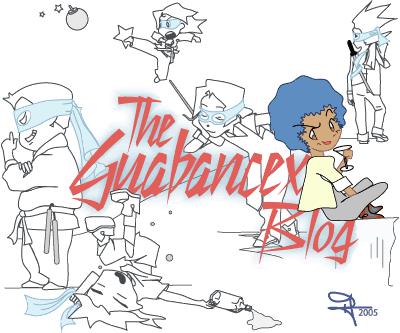Nappy haired politics
A few weeks ago something truly profound occurred. My mother after years of resistance cut her hair short, I mean really short, and went natural. For those of you reading this who are not of the coloured persuasion this may not seem terribly profound; but all you nappy haired broads get where I?m coming from. We may come from different walks of life but we all share common fixations with our hair. What to do with it and what others think of it.My hair issues began at birth, or so I?m told. Upon entry into this world the delivery nurse was apparently so taken with the copious mop of curly locks attached to the puny infant that she got the name wrong on the birth certificate. She wanted to know how my mother, obviously black, had produced this apparently, well, exotic creature. Well, you can figure that out for yourself. My point is we are indoctrinated from infancy into the vagaries of ?good hair? vs. ?bad hair?.
Hair length and intricacy of coiffure has always been intrinsically linked to social standing. Historically long hair has been associated with power, wealth, and virility; take Samson for instance. In Masai culture, only warriors are allowed to grow their hair out. While all else are obligated to be clean shaven, the Masai warrior sports a waist long queue at the back; with the front of his ?do? comprised of a multitude of braids divided into three sections. Mediterranean cultures reportedly prized the rare blonde and Caribbean women were told that their hair was their beauty and were encouraged to pursue a generally futile campaign to grow their tresses out long and straight.
Even as a child I wasn?t buying into that load of hooey; but I did learn early that the texture of one?s hair, even in our deceptively homogenous Caribbean societies, figured largely in how one was treated. Studies show that persons deemed beautiful by social norm receive inadvertent preferential treatment, as do little girls with shoulder length ?Indian? hair in a class full of black children. Trust me, I was there.
So what?s happened? How come the current plethora of dreadlocks, twists, corkscrews and braids? Up until the late 1960?s the person of colour tended to subscribe to Caucasian standards of grooming, oftentimes leading the campaign against nappiness. Madam C. J. Walker, an African American, in the late 1800?s was the first to create a veritable ?system? for back hair. The Walker System comprised of a technique involving the use of heated metal combs, and the odd burnt ear I?m sure, to iron hair too sleekness; sound familiar? Kinky hair was pressed, permed and pomaded into bone straight submission.
Then came the black power movement, Cleopatra Jones and the Afro. Black was beautiful, youth culture was in, ?ya-di-ya-di-ya?. But try as they might, the black power people ought not to not take all the credit. It was a time of change, counter culture was in and everyone was tossing out ?old? standards of rightness. But be not deceived, a full-blown sixties ?fro is no easy undertaking. Most simply couldn?t grow their hair out to the requisite proportions (enter, stage left, ?bewigged lady?); and as we all know large quantities of loosened Negroid hair makes for late night battles with a wire brush.
So it was for those reasons, and not just the oddities of fashion and diminished black pride, that the trend towards natural hairstyles waned with the end of the seventies. The eighties was the decade of the Jheri Curl, an experience most of us sampled with mixed reviews. Yes, it was easy and unisex, but it was also wet, greasy, required a regiment of malodorous chemicals for upkeep and extensive processing, and looked just plain weird on most. Scratch that, it wasn?t all that easy.
By the 1990?s, hung over from Jheri Curl fumes, many returned to their straighteners but more went natural. Marshalled by the all but inescapable hip-hop culture, one of the few movements where being dark skinned is actually an asset, naturalistic styles have made a resurgence. The natural hair care industry in the United States of America is reportedly pulling in an estimated US$300M annually. The strictures against these ?new? looks in the school and workplace have been easing, but some have been met with stiff resistance from those who still view nappiness as slovenly.
But, meanwhile, black ?dos? are spilling over into the non-black community. Dreadlocks, twists, corkscrews, braids, fades and the like now amiably co-exist with weaves, relaxers, dye jobs and yes the embattled Jheri Curl. For Gen ?X? and ?Y? it is no longer about racial politics; it?s all about practicality, affordability and individual style. Oh, by the way, my mother loves her new look.
